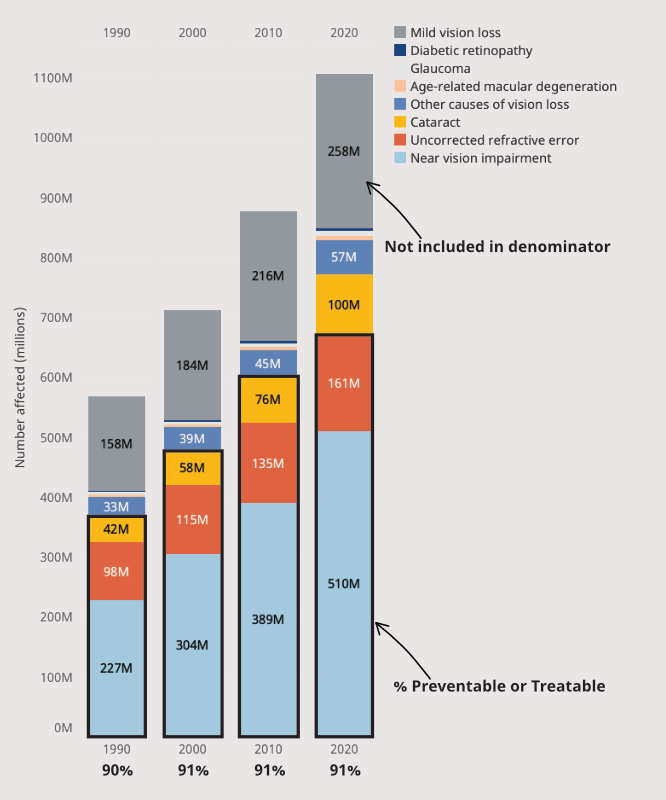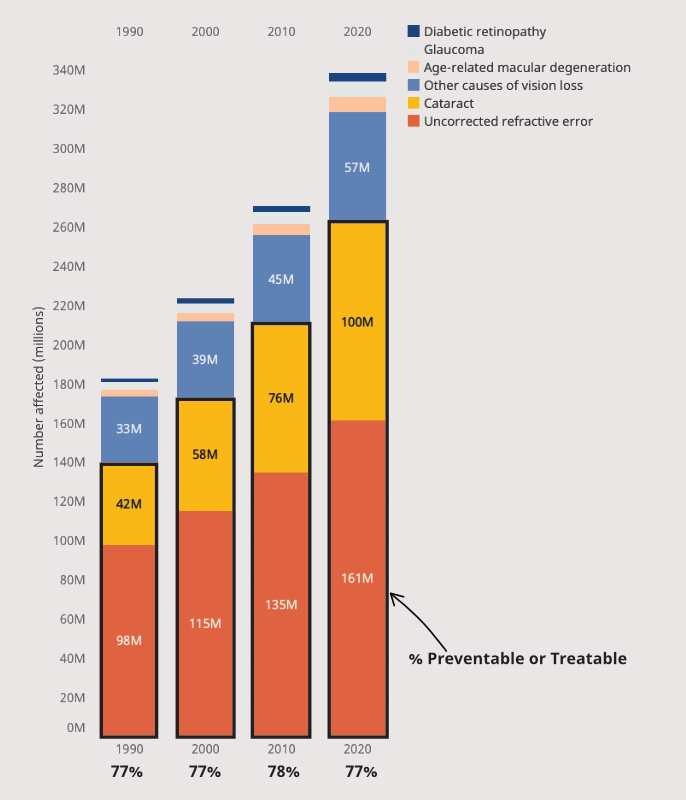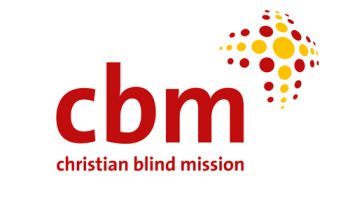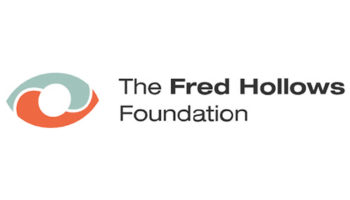Join a powerful, unprecedented alliance for better eye health for all.
Join IAPBUnderstanding Data and Evidence
Treatable or preventable vision loss
At least 771 million people (90%) have vision loss that can be prevented or treated.
How much vision loss is treatable or preventable?
The IAPB Vision Atlas and the Lancet Global Health Commission on Global Eye Health report that 90% of vision loss can be prevented or treated. Here, we explain how this number was calculated, and the relationship to previous estimates.
At least 771 million people (90%) have vision loss that can be prevented or treated.
- 161 million people have uncorrected refractive errors that can be treated with spectacles or contact lenses.
- 100 million people have cataract that can be treated with surgery.
- 510 million people have near vision impairment due to uncorrected presbyopia that can be treated with spectacles.
161 million + 100 million + 510 million = 771 million
There are 77 million people (10%) with vision loss from conditions that require ongoing management, treatment, low vision services or rehabilitation. Although some of these conditions may also be treatable or preventable, that are not classified as such because it is unclear how much vision loss could’ve been prevented or treated.
- 8 million people have vision loss due to age-related macular degeneration
- 8 million people have have vision loss due to glaucoma
- 4 million people have have vision loss due to diabetic retinopathy
- 57 million people have vision loss due to other causes.
Total vision loss (771 million + 77 million = 848 million).
Proportion preventable or treatable = 771 / 848 * 100 = 91.6%
Importantly, there are also 257 million people with mild vision loss. While a large proportion of mild vision loss is likely to be due to uncorrected refractive errors, mild vision loss has not been classified as preventable or treatable due to the absence of information about the causes of mild vision loss.
Has the proportion of vision loss that preventable or treatable changed?
Although the number of people with vision loss is growing each year, the proportion that is preventable or treatable has remained fairly steady at just over 90% over the past 30 years.
Has the definition changed?
Historically, it was widely reported that >75% of visual impairment was avoidable. This definition was based on cataract and uncorrected refractive errors for distance vision loss only. Using this calculation, which excludes near vision, with the updated VLEG data (modelled back to 1990) the results are similar. Although the number of people with vision loss is growing, the proportion that is preventable or treatable has stayed constant.
100% of vision loss due to uncorrected presbyopia can be treated. This has always been the case, however near vision loss wasn’t considered in these calculations previously.
What should be included in future assessments of preventable and treatable vision loss?
So that we can better understand and monitor preventable and treatable vision loss trends, more comprehensive data are required, particularly for younger age groups.
- Mild vision loss currently impacts 257 million people. Better data would allow more detailed analysis of the causes of mild vision loss
- More information on the causes of ‘other vison loss’, which currently impacts 57 million people is needed. Many preventable or treatable conditions such as onchocerciasis, trachoma, xeropthalmia are listed as ‘other vision loss’. More data availability would help to identify progress in preventing and or treating these conditions.
- More information is needed on the proportion of vision loss due to diabetic retinopathy, age-related macular degeneration and glaucoma that is preventable or treatable.
- More information is needed on emerging trends of vision loss e.g. myopia macular degeneration, retinopathy of prematurity and genetic diseases, so that timely preventions can be introduced.










